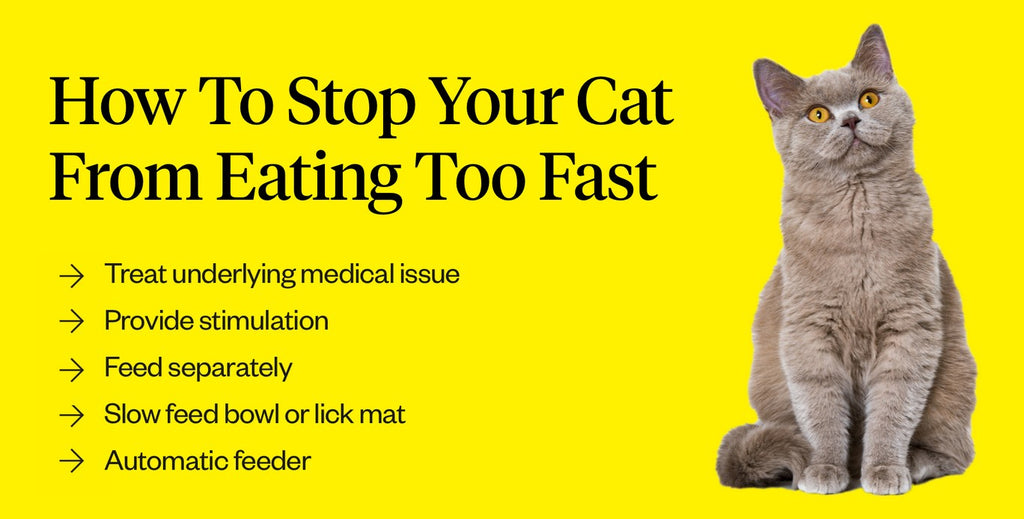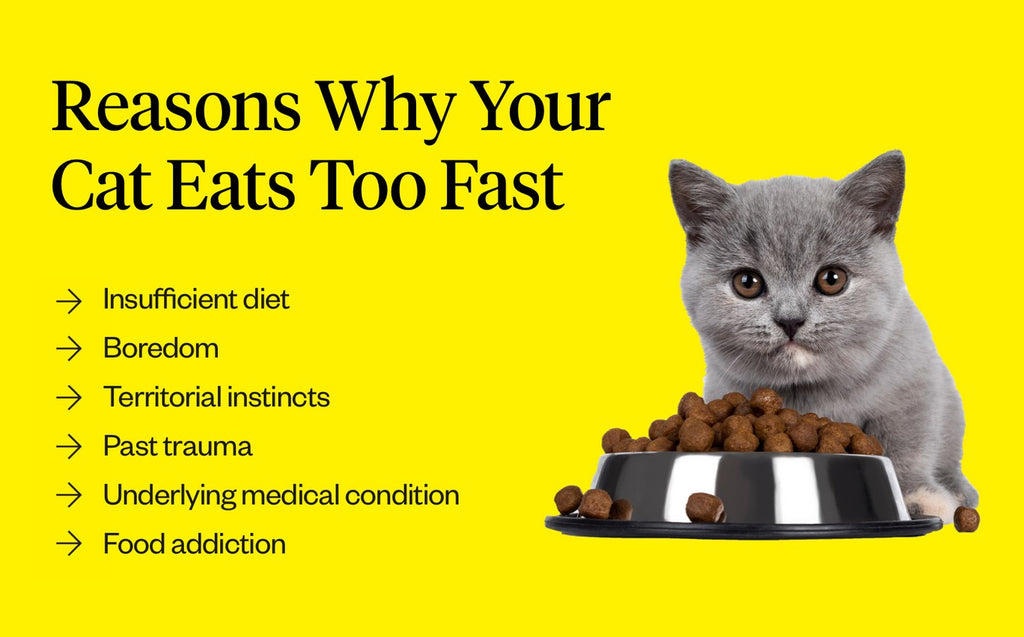Have you ever walked into the kitchen to find your feline friend looking like she just survived a cat-astrophe, with food scattered everywhere and a telltale puddle on the floor? You’re not alone! Many cat owners have witnessed this peculiar phenomenon: their cat gorges on food at lightning speed, only to regurgitate it mere minutes later. It’s a mystery that has left many of us wondering, “Why does my cat eat too fast and then vomit?”
Understanding Feline Gobbling Habits
Cats are notorious for their voracious appetites, but this behavior is more than just your average feline gluttony. There are several reasons why your cat might be eating too quickly, followed by a dramatic vomiting session.
The Speed of Eating: A Factor in Feline Vomiting
One major contributor to this phenomenon is the speed at which cats eat their meals. Cats are designed to hunt and consume small prey quickly, and this instinctual behavior carries over to their feeding habits. When your cat gobbles down her food too rapidly, she may not be able to properly chew or digest it, leading to a nasty case of regurgitation.
Join us as we delve deeper into the reasons behind your cat’s eating habits and explore ways to minimize this pesky problem in future sections.

Understanding Feline Gobbling Habits (Continued)
The Importance of Food Texture and Temperature
In addition to eating speed, food texture and temperature can also play a crucial role in your cat’s propensity to vomit. Dry kibble, for instance, can be particularly challenging for cats to digest if it’s not properly moistened with water or another liquid. This is because dry food can sit in the stomach undigested, leading to discomfort and subsequent vomiting.
On the other hand, some cat owners swear by serving their feline friends’ meals at room temperature or even slightly warmed. This can help stimulate their appetite and encourage a more leisurely eating pace, reducing the likelihood of rapid consumption followed by regurgitation.
The Role of Stress and Anxiety
Stress and anxiety are common factors that can contribute to your cat’s eating habits. If your feline friend is experiencing stress or anxiety due to changes in her environment, health issues, or other factors, she may eat more quickly than usual as a coping mechanism.
This increased stress can cause her digestive system to become imbalanced, leading to vomiting and other gastrointestinal issues. By addressing the underlying causes of your cat’s stress and anxiety, you may be able to reduce the frequency of these episodes.
For example, try providing your cat with a quiet, comfortable space for eating, or consider incorporating calming treats or supplements into her diet.
The Connection Between Vomiting and Digestive Health
Vomiting can also be a sign of underlying digestive health issues in cats. Gastroesophageal reflux disease (GERD) is one such condition that can cause regurgitation and other symptoms.
According to the American Animal Hospital Association, GERD is characterized by stomach acid flowing back up into the esophagus, causing discomfort and potentially leading to vomiting.
Learn more about feline gastrointestinal diseases and how they can be managed with the help of your veterinarian.
In our next section, we’ll explore ways to minimize the frequency of vomiting episodes in your cat. From modifying her diet to incorporating stress-reducing strategies, you’ll find helpful tips and tricks for promoting a healthier, happier feline companion.
Get Expert Advice on Cat Eats Too Fast Then Vomits
Consult with medical experts specializing in pet care and nutrition to address your concerns.
Get Expert ConsultationIn our previous section, we explored one major reason why your cat might be eating too fast and then vomiting: the speed of eating itself. As we mentioned earlier, cats are designed to hunt and consume small prey quickly, and this instinctual behavior carries over to their feeding habits.
Summarizing the Key Points
So far, we’ve discussed two key reasons why your cat might be eating too fast and then vomiting:
- The speed at which cats eat their meals: when your cat gobbles down her food too rapidly, she may not be able to properly chew or digest it, leading to a nasty case of regurgitation.
Final Insights
In conclusion, understanding why your cat eats too fast and then vomits requires recognizing that this behavior is more than just feline gluttony. By acknowledging the natural hunting instincts behind your cat’s eating habits, you can better address the issue and provide a healthier, happier feline companion.
A Strong Conclusion
As we wrap up our exploration of this peculiar phenomenon, remember that with patience, understanding, and a few simple adjustments to your cat’s feeding routine, you can minimize the frequency and severity of these vomiting episodes. By providing a more relaxed and enjoyable dining experience for your feline friend, you’ll be rewarded with a healthier, happier cat – and fewer messes to clean up!
Related Posts
- How to Make Brewer’s Yeast without Garlic for Cats: Discover the simple steps to create a healthy, garlic-free yeast supplement for your feline friend. Whether you’re looking to boost their immune system or support their digestive health, this article has got you covered!
- Almond Extract and Dogs: A Unique Combination: Are you wondering what’s behind the growing trend of using almond extract in dog care? Learn how this natural ingredient can support your pup’s health and well-being, from soothing skin issues to reducing anxiety.
- The Best Dog for a Single Female Living in an Apartment: As a single female living in an apartment, finding the right canine companion can be challenging. This article provides expert advice on what breed and characteristics to look for when searching for your perfect match.


